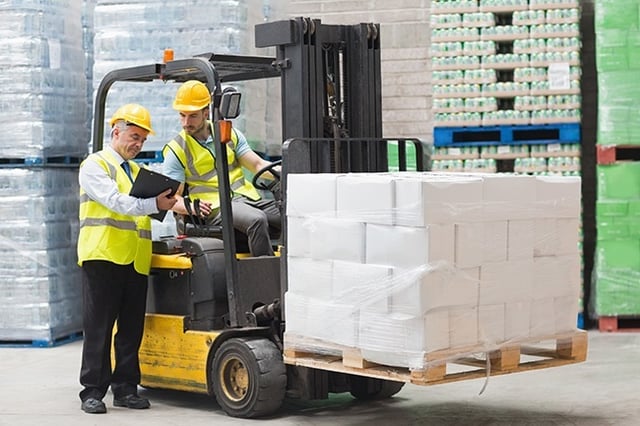
At VersaCold, safety is our top priority. In our workplace, on the road and in our homes, "safety first" is embedded into our performance-driven culture and reflected in everything we do. We are committed to maintaining a hazard-and injury-free workplace to keep both our employees and visitors safe. As part of our commitment to safety, we will be sharing some of our safety tips with you to help pass on tried and tested ways to make your workplace and home life more safe.
----
You have probably heard all the tips when it comes to moving heavy objects.
Lift with your legs, not with your back. Bend your knees. Keep your head up. Don’t twist.
Despite these tips being virtually common knowledge, lifting or handling heavy objects is still the leading cause of back injuries in the workplace. In fact, a typical worker that handles heavy objects as part of their job misses an average of seven days of work due to back injury every year. Seven days is a lot of time to miss for an injury that is painful and easily avoidable with the right technique. To help you combat this potential hazard, we recommend taking three steps while making your next lift.
Quick Tips
Tip #1:
Think before you lift. Always take a moment to assess the object and where it is going before committing to lifting the object.
Tip #2:
When lowering an object, you should maintain the same form as the initial lift by bending your knees, squatting down and keeping your back completely straight.
1) Think before you lift
By far, thinking before you lift is the most important step when lifting any heavy object, and it's the one people often forget. While our gut reaction might be to lift first and determine where the object goes afterward, that is rarely the right approach. Instead, you should take time, even if it's only a moment, to assess the object and where it is going. Do yourself a favour and ask yourself these questions:
- How heavy is this object? If it's too heavy, you will probably want to ask for help. While we know you are likely in a hurry (who isn't?), there is a better chance you will waste more time by straining your back.
- What is the size of the object? Can you see above the box that you are carrying? In a truck yard where vehicles are consistently moving in different directions at varying speeds, the ability to see in front of you is vital to your safety and the safety of your colleagues. If the box is too big, don't be afraid to ask for assistance while carrying the object.
- Do you have a clear path? A plan for transporting any object is key to any successful lift. Even if it's a matter of a few feet, ensure that your path is clear of any obstacles and that you know exactly how you are getting to your destination.
By asking yourself these questions before any lift, you can ensure that you are prepared for the task ahead of you.
2) Lifting the object
Now that you have given some thought to your task, it's time to lift the object. While we have all heard some variations of this advice before, there are some fundamental techniques to any successful lift.
- Stand directly in front of any heavy object you are lifting with your feet at shoulder distance apart.
- Do not bend over to pick up the object, always keep your back as straight as possible when lifting.
- Bend at your knees and squat down to grasp the object. Once you have a good grasp, stand straight up using your legs and buttocks.
- Always get a stool or a ladder when lifting an object located above your head. The stool or ladder should bring you to a height that lets you comfortably grab the object rather than reaching overhead. Doing this will allow you to get a better grip and prevent the sudden weight of an object pulling down on your grasp—or coming down on you!
3) Lowering the object
While most people think the hard part is over once you complete the initial lift, you would be surprised to find out that most injuries occur at the end of the lift. When lowering an object, it's crucial you take the same amount of care with the lowering as you did with the lifting. You can accomplish this by maintaining the same form as the lift by bending your knees, squatting down and keeping your back completely straight as you set the item into place.
---
Phew! All done! Hopefully, by incorporating these steps, you have completed an injury-free lift. Have any other lifting tips for the workplace? Share them below and let us know what we missed.
Contact one of our Sales Specialists today and let us show you why we are the right choice for your business. sales@versacold.com or 1-800-563-COLD










